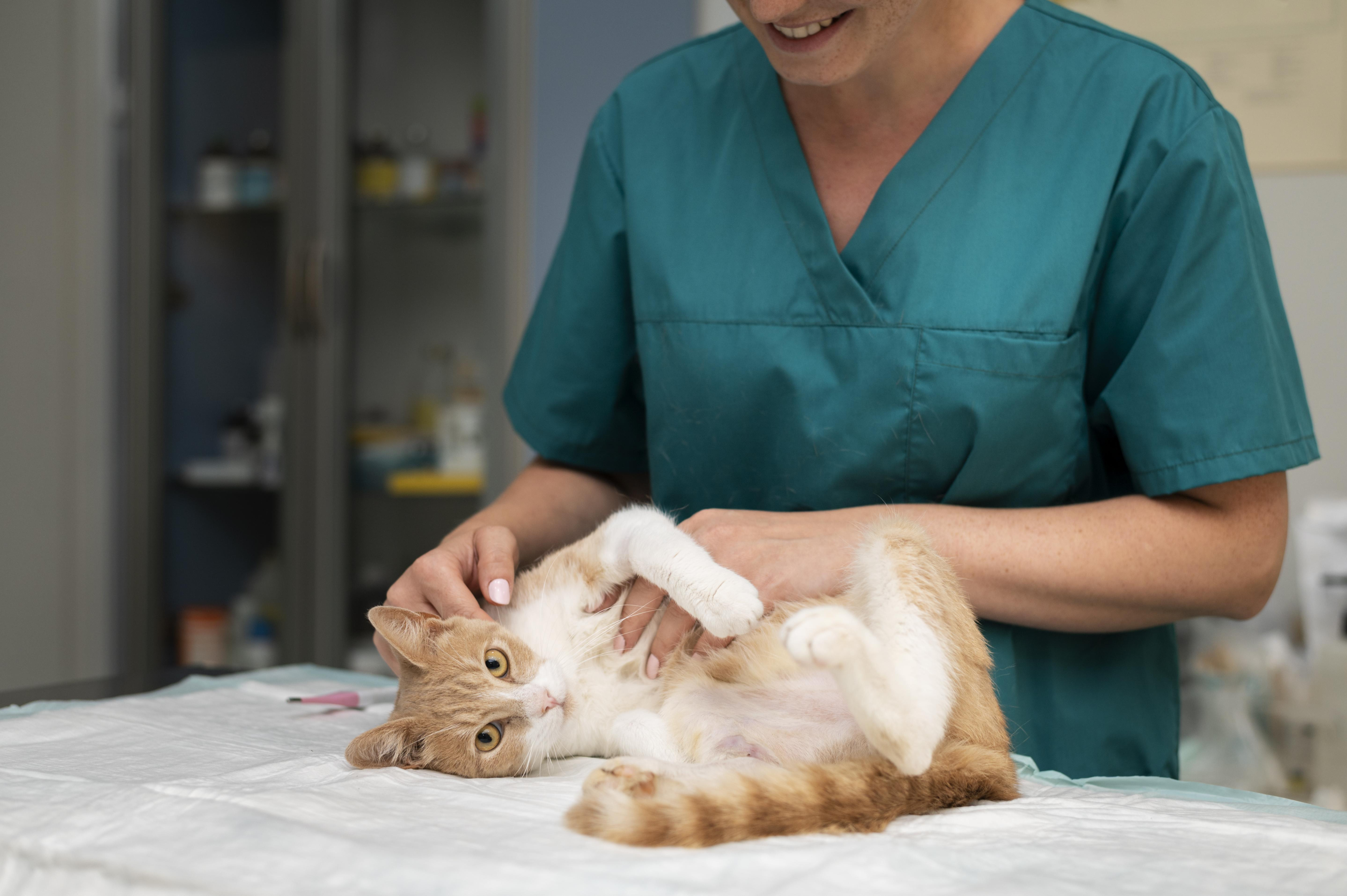Cats, with their subtle ways of showing discomfort, often require a keen eye to notice when they’re not feeling their best. Changes in behavior or routine habits can be indicators that your feline friend is experiencing distress and might need veterinary care. Gabapentin has become a widely used medication in veterinary medicine to help manage various conditions in cats. But understanding the correct dosage is crucial for safe and effective treatment.
This guide aims to provide cat owners with comprehensive information on gabapentin dosage for cats, ensuring you are well-informed about how much gabapentin is appropriate for your feline companion without compromising their health.
Understanding Gabapentin for Cats
Gabapentin was originally developed for humans as an anticonvulsant medication. However, its applications have expanded, and it is now frequently used in veterinary medicine. Veterinarians commonly prescribe gabapentin to manage chronic pain, particularly neuropathic pain, seizures, and anxiety in cats. Its ability to calm anxious cats, especially before stressful events like vet visits, has also made it a valuable tool for cat owners.
While gabapentin is not officially FDA-approved for use in pets, its effectiveness and rapid action have led to its widespread off-label use by veterinarians. It’s essential to emphasize that administering gabapentin to your cat should always be under the guidance of a veterinarian. Dosage is not a one-size-fits-all calculation and depends heavily on your cat’s specific condition, overall health, and the reason for treatment.
Determining the Right Gabapentin Dosage for Your Cat
 Veterinarian examining a cat and preparing gabapentin dosage
Veterinarian examining a cat and preparing gabapentin dosage
The question “How Much Gabapentin Can I Give My Cat?” is best answered by a veterinarian who can assess your cat’s individual needs. Gabapentin dosage for cats is not static; it varies significantly based on what condition is being treated – whether it’s seizures, pain, or anxiety. Furthermore, the severity of the condition and the cat’s response to the medication will also influence dosage adjustments.
It is paramount to never self-medicate your cat with gabapentin or adjust the dosage without consulting your vet. Incorrect dosages can be ineffective or, worse, harmful to your cat’s health. Veterinary guidance ensures that the dosage is not only effective but also safe for your feline friend.
Here are general dosage guidelines for gabapentin in cats for different conditions. However, these are for informational purposes only and should not replace professional veterinary advice:
Gabapentin Dosage for Seizures in Cats
For managing seizures, the typical gabapentin dose for cats ranges from 2.5 to 5 mg per pound (5 to 10 mg/kg), administered every 8 to 12 hours. In more severe cases, or if the initial dosage is not effective, a veterinarian might increase the dose up to 10 mg per pound (20 mg/kg). The goal is to control seizure activity while minimizing potential side effects.
Gabapentin Dosage for Pain Relief in Cats
When using gabapentin for pain relief, the starting dosage is generally 1.5 to 5 mg per pound (3 to 10 mg/kg), given every 12 hours. For more intense pain, such as that associated with cancer, surgery, or arthritis, the dosage can be increased. In some cases, veterinarians may prescribe up to 50 mg per dose, administered up to three times daily. Gabapentin is particularly effective for neuropathic pain and is often used in conjunction with other pain medications for a comprehensive pain management plan.
Gabapentin Dosage for Anxiety in Cats
To reduce anxiety, particularly in stressful situations like veterinary visits or travel, a common gabapentin dosage is 20 mg/kg, given 1 to 2 hours before the anticipated stressful event. This pre-emptive dose helps to calm the cat and make the experience less traumatic. A study highlighted the effectiveness of this dosage in reducing stress in cats during veterinary procedures.
Potential Side Effects of Gabapentin in Cats
While gabapentin is generally considered safe for cats, it’s essential to be aware of potential side effects. Being informed allows for prompt recognition and management if any adverse reactions occur.
Common side effects of gabapentin in cats may include:
- Lethargy and Sedation: This is a common side effect, as gabapentin has sedative properties. Your cat might appear more tired or less interested in usual activities.
- Incoordination (Ataxia): Cats may exhibit wobbliness, clumsiness, or a lack of coordination in their movements. This can manifest as difficulty walking or an unsteady gait.
- Vomiting and Decreased Appetite: Gastrointestinal upset can occur in some cats, leading to vomiting or a reduced desire to eat.
- Behavioral Changes: In rare cases, cats might display unusual behaviors such as increased vocalization or agitation.
It’s crucial to monitor your cat closely after administering gabapentin, especially when starting treatment or adjusting the dosage. If you observe any of these side effects or anything else unusual, contact your veterinarian immediately.
Important Precautions When Giving Gabapentin to Your Cat
- Veterinary Consultation is Key: Always consult with your veterinarian to determine the appropriate dosage and ensure gabapentin is suitable for your cat, considering their health history and current medications.
- Gradual Withdrawal: Do not abruptly stop giving your cat gabapentin, especially if they are being treated for seizures. Discontinuation should be gradual and under veterinary supervision to prevent withdrawal seizures.
- Kidney Disease: Cats with kidney disease may require lower doses of gabapentin, as their kidneys may not process the drug as efficiently. Veterinary guidance is crucial for cats with kidney issues.
- Monitoring and Adjustments: Regular veterinary check-ups are important to monitor your cat’s response to gabapentin and make any necessary dosage adjustments.
Frequently Asked Questions about Gabapentin for Cats
Can I stop giving my cat gabapentin suddenly?
No, you should not abruptly discontinue gabapentin, especially if your cat is using it to manage seizures. Sudden cessation can trigger withdrawal seizures. Always taper off the dose gradually under the direction of your veterinarian.
Is gabapentin safe for long-term use in cats?
Yes, gabapentin is often used long-term in cats, particularly for chronic conditions like arthritis or persistent pain. Long-term use should be monitored by a veterinarian to ensure continued safety and effectiveness.
What if I miss a dose of gabapentin?
If you miss a dose of gabapentin, give it as soon as you remember, provided it’s not too close to the next scheduled dose. If it is almost time for the next dose, skip the missed dose and continue with the regular schedule. Do not double up on doses to make up for a missed one.
Gabapentin for Cats: Use with Veterinary Supervision
Gabapentin is a valuable medication that can significantly improve the quality of life for cats suffering from pain, seizures, or anxiety. However, understanding how much gabapentin can I give my cat is not something to guess at. Accurate dosage is critical for both the effectiveness and safety of the treatment.
Always prioritize consulting with your veterinarian to determine the correct gabapentin dosage for your cat’s specific condition and needs. With proper veterinary guidance and careful monitoring, gabapentin can be a safe and effective option for managing various health issues in your feline companion. If you have any concerns or questions about using gabapentin for your cat, reach out to your veterinarian for professional advice and support.

